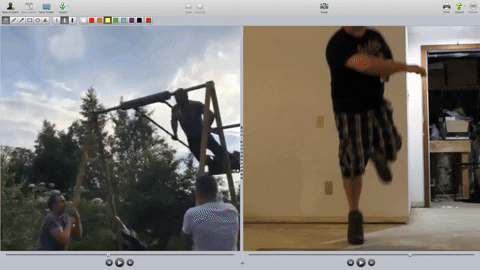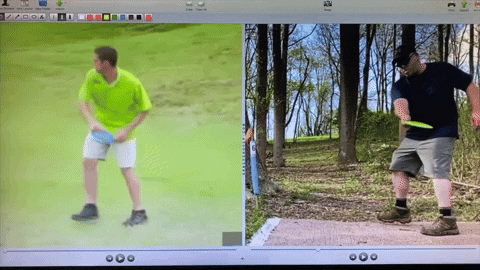TrebuchetDiscGolf
Newbie
- Joined
- Nov 6, 2022
- Messages
- 43
Re: power output of this move.
What move are you talking about?
If youre talking about Weismann's stuff, I honestly dont know anymore. I kinda filled in the gaps and assumed him and me were after the same motion, but Im not sure anymore. Sebastians throw seems pretty inline with my ideas of what works well… not that Ive spent much time picking his form apart.
If the question is about my OLD as we were just talking about then: No offense meant, but 100% wrong question. My move is a bais a balance calibration and a way to discover the power of dropping the rear hip under. Which I have found to be a key part of understanding 'shifting underneath' or whatever it is these guys came up with (I think its the same idea).
Its not about potential power output. Its about finding how you can use your hips and brace to generate power and starting to build some balance behind a brace.
Seabass saying he doesnt agree with the rear hip dropping as a power source is challenging. That is the power source of this drill. It may not be a large power source in a full throw… and it may be an even smaller source in the way Seabas throws in OLDs, but it is the primary source of power in this drill and keying into that can and has helped people make positive changes in how they throw.
What move are you talking about?
If youre talking about Weismann's stuff, I honestly dont know anymore. I kinda filled in the gaps and assumed him and me were after the same motion, but Im not sure anymore. Sebastians throw seems pretty inline with my ideas of what works well… not that Ive spent much time picking his form apart.
If the question is about my OLD as we were just talking about then: No offense meant, but 100% wrong question. My move is a bais a balance calibration and a way to discover the power of dropping the rear hip under. Which I have found to be a key part of understanding 'shifting underneath' or whatever it is these guys came up with (I think its the same idea).
Its not about potential power output. Its about finding how you can use your hips and brace to generate power and starting to build some balance behind a brace.
Seabass saying he doesnt agree with the rear hip dropping as a power source is challenging. That is the power source of this drill. It may not be a large power source in a full throw… and it may be an even smaller source in the way Seabas throws in OLDs, but it is the primary source of power in this drill and keying into that can and has helped people make positive changes in how they throw.
Last edited:



